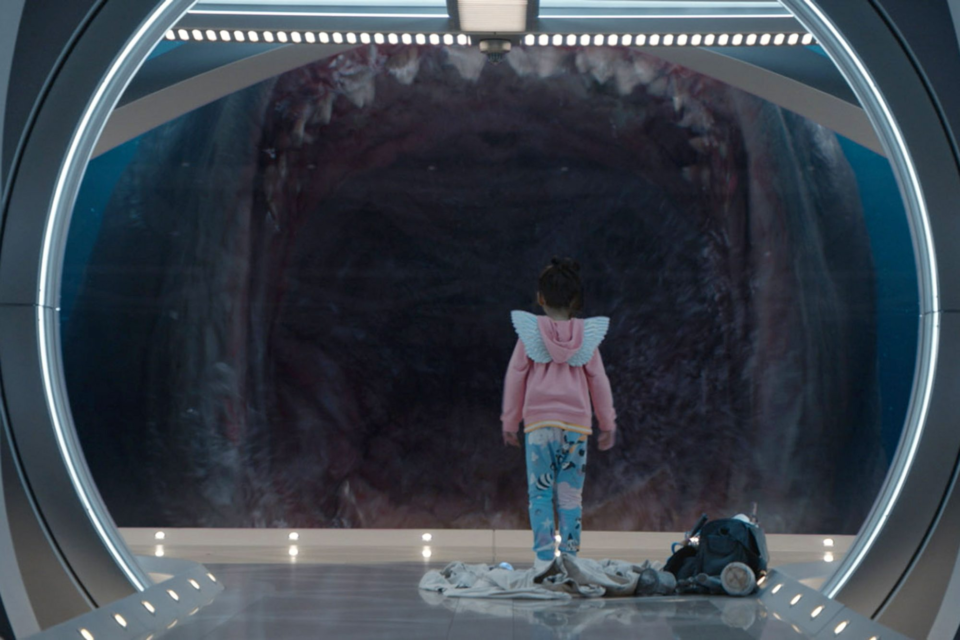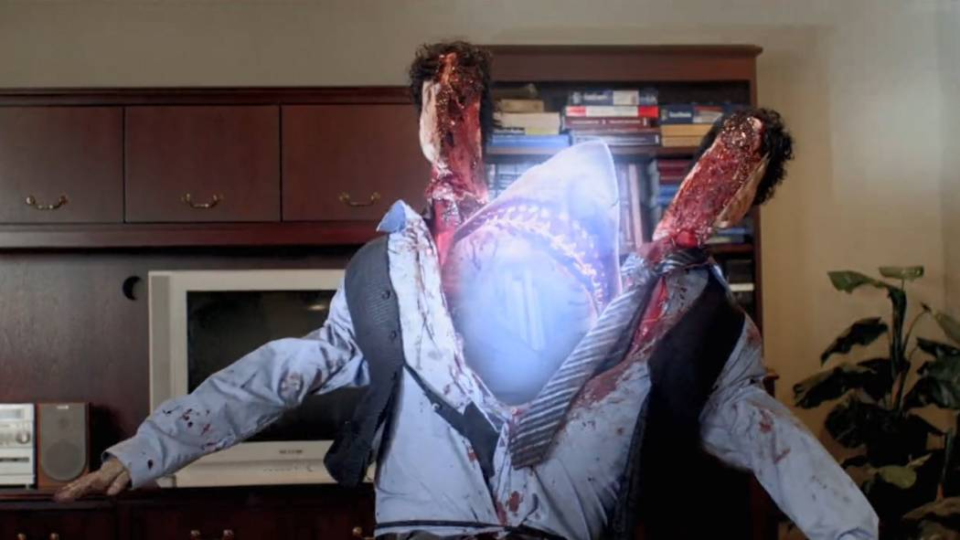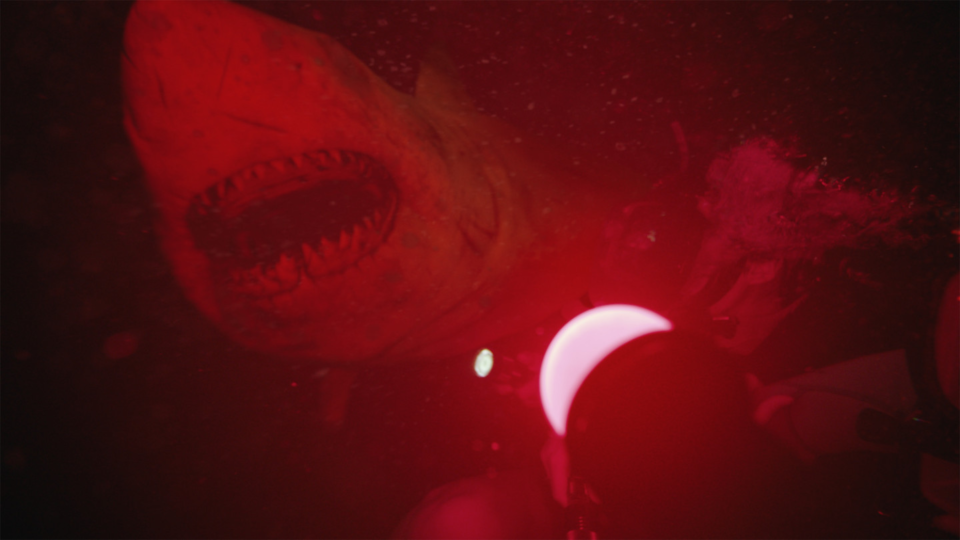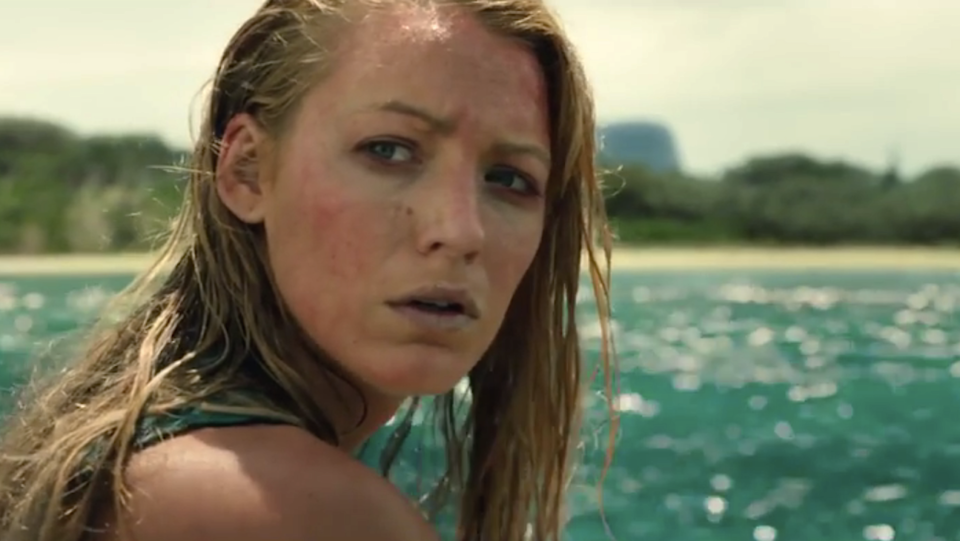The Best (And Worst) Shark Deaths In Horror History

Since Jaws first broke the water for finned thrillers in 1975 we have had a plethora of shark films follow suit. Filmmakers have found more inventive ways to separate humans from land in order to be hunted by the killer fish. We all know that sharks don’t have the vengeful spirit that we see on screens, but we still love these gory creature features. Now, 48 years on from Jaws, the shark genre’s sunny seaside locations and bloodsoaked waters still make for the best summer blockbusters and some of horror’s best (and worst) kills.
This list features some of the oldest cinematic tricks for a watery demise (as well as the most absurd) in order to determine what makes the best shark deaths in horror history.
WORST SHARK DEATHS
The Meg, dir. Jon Turteltaub (2018)

Every shark fan was excited when it was announced that Jason Statham would be diving onto the big screen to fight the prehistoric beast that is the megalodon. But unfortunately despite the creature’s wide mouth radius this film severely lacked bite. While Jason Statham performed the straight man as only Statham can, The Meg didn’t jump out.
Its most impressive death sequence riffs off the Jaws narrative where a team captures the wrong shark. Of course, this party is quickly disbanded by the Meg rising from the depths swallowing The Wall (Ólafur Darri Ólafsson) whole and taking their prize catch with it. There is little blood and no tearing flesh. It evokes no terror before its big belly flop.
Ghost Shark, dir. Griff Furst (2013)

This film does exactly what it says on the tin. After a great white shark is killed, it wreaks havoc on the town as a glowing ethereal ghost. The only way to stay safe from the creature is to stay dry. Of all the shark films out there, it scores points for its outlandish deaths as each water source has the potential to summon the supernatural sea monster. But it would be more fun to watch a kill count on YouTube than sit through the film. It does get points, though, for a death sequence where a guy is torn open from the inside after drinking luminescent ghost shark-infested water from the cooler.
The Meg 2: Trench, dir. Ben Wheatley (2023)

Those of us who remained optimistic for the prehistoric apex predator, had our hopes dashed on the rocks by The Meg sequel. The new Ben Wheatley film also forgot that it was in fact a shark movie, spending half its runtime focused on an illegal underwater mining operation. When it finally remembers the megalodons the second act of aquatic action offers more bite for your buck. However, the remaining meg problem persists, as its gargantuan jaw size removes the schlocky gore we’ve grown to love and the greatest battle scenes are when the beast takes on something of its own size. That’s why the best shark death in the sequel is when the Meg lunges out of the sea to snack on a T. rex.
Jaws, dir. Steven Spielberg (1975)

To this day Spielberg’s masterpiece expertly fills us with dread, teasing us with only the sliver of a fin, and minimal fish sightings throughout. While Jaws set the benchmark for shark movies, it also features one of the worst shark deaths. It’s the moment when Quint (Robert Shaw) slides into the mouth of the great fish. Even the creature’s haunting vacuous eyes can’t save the robotic chomping from breaking the mystique that’s been built.
BEST SHARK DEATHS
Thunderball, dir. Terence Young (1965)

It’s often understandably assumed that Jaws began the shark thriller genre that we have grown accustomed to. But the large, finned fishes were terrorizing spies long before Spielberg took the helm. Ian Fleming’s Bond villains often adopted sharks as their favorite weapon for execution. In Thunderball one of the villain’s henchmen is knocked into the shark-infested pool. The lens is tinted red in classic Bond fashion, and we see from the dying henchman’s perspective as his fellow men leave him to his watery grave. It’s so simple, yet chillingly effective.
47 Meters Down Uncaged, dir. Johannes Roberts (2019)

No this is not a 47 Meters Down director’s cut, but the series’ second installment, this time directed by Johannes Roberts. By leaving the cage behind and replacing it with cave diving in a sunken Mayan city that is now home to blind great whites, Roberts increased the nightmarish horrors and claustrophobia of his first venture tenfold. Filled with great jumpscares, bloody deaths, and a fair amount of gargled screaming it’s one of the best recent additions to the genre.
For those who hated Aidan in Sex and The City, this is your moment to relish in John Corbett’s brutal death scene. Grant (John Corbett) is promising his daughters they’ll survive when he’s rudely interrupted by a shark’s toothy grip. If you learn anything from this list, it’s worth noting that impassioned monologues aren’t received well by those who inhabit the depths.
The Spy Who Loved Me, dir. Lewis Gilbert (1977)

Fleming’s penchant for sharks continued for many of his villains. In The Spy Who Loved Me not only is there a henchman with metal teeth aptly named Jaws (Richard Kiel), but a pet shark is supervillain Karl Stromberg’s (Carl Jurgens) favorite assassination device. When Karl discovers his secretary (Marilyn Galsworthy) betrayed him, he sends her off in the lift that drops her into the shark-infested pool. Karl watches on as if watching a TV rerun as the secretary fights for her life. With Bach’s “Air On A G String” playing over the secretary’s screams as the accomplices look on in horror, this scene is not one quickly forgotten.
The Shallows, dir. Jaume Collet-Serra (2016)

When Nancy (Blake Lively) heads to a secluded beach to surf, she quickly becomes stranded on a rock far from shore, with an overzealous shark circling. Using her immediate surroundings to protect herself, what ensues is one of the most inventive survival horrors of the decade. The Shallows‘ ingenuity goes beyond Nancy’s preservation skills as Jaume Collet-Serra demonstrates his knowledge of the genre, as the screen and sea fill with blood during the shocking moment of Nancy’s attack, reminiscent of many pre-existing shark films. Collet-Serra understands that less is more with his death sequences. The best death is where we watch Blake Lively’s horrified face as an intoxicated man (Diego Espejel) wades unknowingly into the water. The terror in her eyes as the thrashing increases is enough for the audience’s imaginations to run wild.
Deep Blue Sea, dir. Renny Harlin (1999)

For any shark film to exist, it must find a way to keep the human chum trapped in the water with the voracious predators. Deep Blue Sea does so by setting the film in a sub-aquatic lab where scientists are experimenting on mako sharks to find a cure for Alzheimer’s disease. The film is packed with explosions, pseudo-science, and for some reason LL Cool J. If you love watching Samuel L. Jackson deliver stirring speeches, wait till you see how this one is punctuated.
No moment has since surpassed the horror of watching Jim Whitlock (Stellan Skarsgard) have his arm ripped off while enjoying a cigarette next to the harnessed test subject. What makes this moment even more entertainingly ludicrous is watching in stunned silence as the rescue helicopter is brought down by the creature and Jim is thrust into the subterranean lab’s window. Jim suffers the most absurd death of any shark movie as his stretcher and dying body are weaponized by the fish to enact their revenge on the white coats. It is a moment yet to be bested.
Categorized:Editorials

